Beams can be categorized based on their support and the arrangement of loads. Common types include:
1. Simply Supported Beam:Bending Moment: Maximum at the center, zero at supports. Loads: Concentrated or distributed loads.
2. Fixed or Rigid Beam:Bending Moment: Maximum at supports, zero at the center.
Loads: Concentrated or distributed loads.
3. Cantilever Beam:Bending Moment: Maximum at the fixed support, zero at the free end. Loads: Applied at the free end or distributed along the length.
4. Overhanging Beam:Bending Moment: Maximum at supports and possibly at overhangs. Loads: Concentrated or distributed loads.
Loads can be classified as:
1. Concentrated Load: Applied at a single point.
2. Uniformly Distributed Load (UDL): Applied over the entire span.
3. Uniformly Varying Load (UVL): Gradually changes magnitude along the span.
Types of beam and their bending moment and types of load, hi guys in this article we know about types of beam and their bending moment and types of load.we explain types of load on beam and types of beam support.as we know beam is flexural structure member that primarily resist load applied laterally to the axis. when axial load is applied over beam resulting bending stress causes two types of bending moment sagging and hogging. Sagging is positive bending moment and hogging is negative bending moment.
Application of axial load causes bending stress developed throughout the beam structure it causes reaction forces at support joints in upward direction. The total effect of all the forces acting on the beam is to produce shear force and bending moment within the beam that induces internal stresses ,strain and deflection of beam.
Beam types are categorised according to their support condition shape of cross section length and material and its function Types of beam and their bending moment and types of load
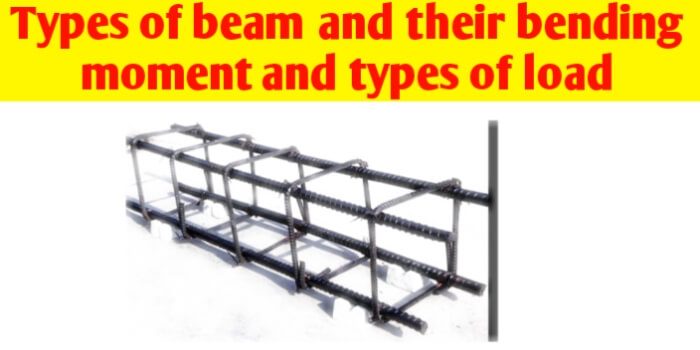
Types of beam according to support condition
We know that beam have many type of support condition like hinge support ,roller support, fixed support, overhanging support ,bending support and free support. Hinge support and roller support provide movement of beam and rotation but fixed support does not allows movement and rotation of beam.Types of beam and their bending moment and types of load
◆You Can Follow me on Facebook and Subscribe our Youtube Channel
You should also visits:-
1)what is concrete and its types and properties
2) concrete quantity calculation for staircase and its formula
1) Simply supported beam :- simply supported beam is supported at both end and one end of beam is supported by hinged support and the other end by roller support. this support allows the horizontal movement of beam and beam types undergoes both shear stress and bending moment.
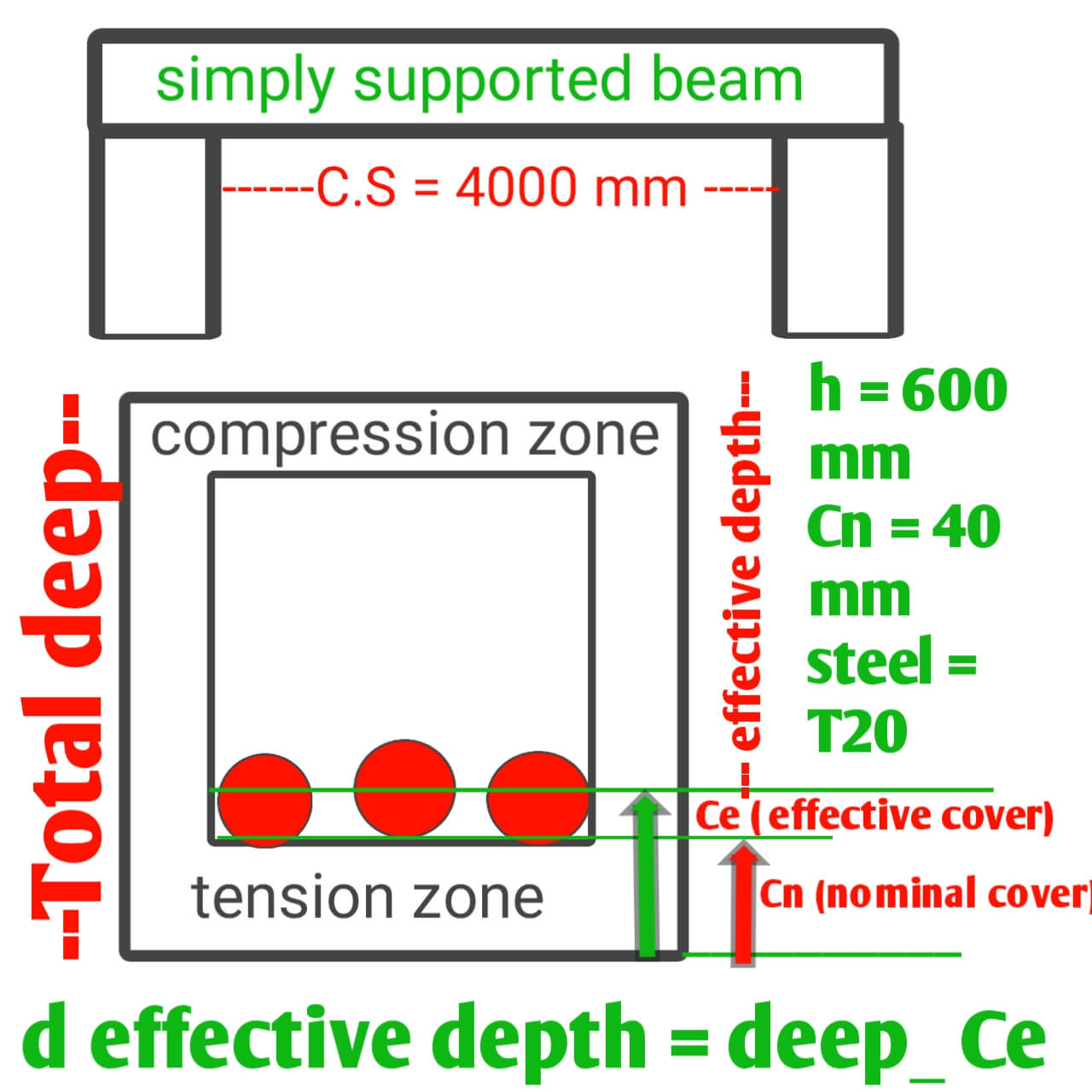
2) Cantilever beam :– cantilever beam is flexural structure member which is fixed at one end and other end is free. this is famous type of beam used in trusses and bridge and other structure member. this beam carries a load over the support end which undergoes both shear and bending moment.
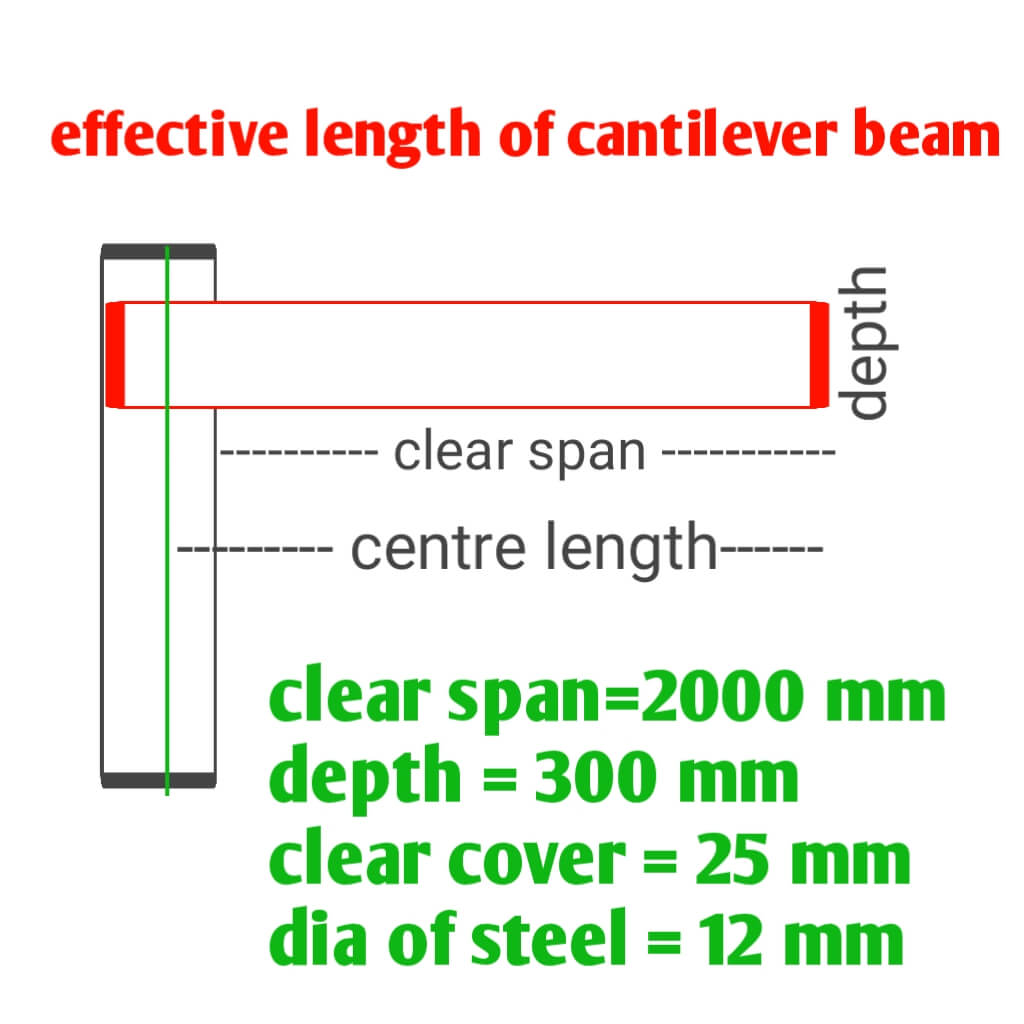
3) Continuous beam :- continuous beam is same as simply supported beam but it has more than two support end and one end is supported by hinged support and other end is is supported by roller support. it is used for formation of long concrete Bridge.
4) Fixed beam :- this beam is firmly supported at both end. Their both end is fixed and it does not allow vertical movement and rotation of beam. This is of strong type beam
5) Overhanging beam :- overhanging beam is combination of simply supported and cantilever beam in which one or both end of overhanging beam is overhang beyond the length of support end. It has hinge support and other has roller support.
Types of beam according to function and position
Types of beam according to function and position we know that beam is provided in building construction in several level that connects the supporting structure member like column to resist load applied over it. It is broadly classified in several types of beam Types of beam and their bending moment and types of load
1) Tie beam :- The beam which is connecting the compressive frame structure of building like column, trusses, cap of pile Foundation above the ground or under the ground is known as tie beam. Let the confusion clear that tie beam is not used only in superstructure of building for connecting compressive frame structure like column and it can be also used in substructure for connecting under lying pile cap and foundation or if Foundation footing depth is more, then it is also necessary to connect all the column member under the ground or on the surface of ground below the plinth level if height of plinth level is more than 3.5 feet from the ground. So all the types of beam in building structure is tie beam.
2) Plinth beam :- plinth beam is type of tie beam which is provided at plinth level of ground surface. Plinth beam is top most part of substructure at ground level and it is starting point of superstructure of building.
3) Lintel beam :– lintel beam is type of tie beam that is provided at the lintel level of building top of window and door level.
4) Roof floor beam :- roof floor beam is also type of tie beam which is provided at the roof floor height
5) Primary beam :- those type of horizontal flexural (beam) structure member which directly connected to supporting compressive structure member like column is known as primary beam.Primary beam is also known as main beam which Safely transfer the load to the column acting on it by the slab or by secondary beam if it is present. so all dead and live load of slab and secondary beam is transfer to the primary beam.
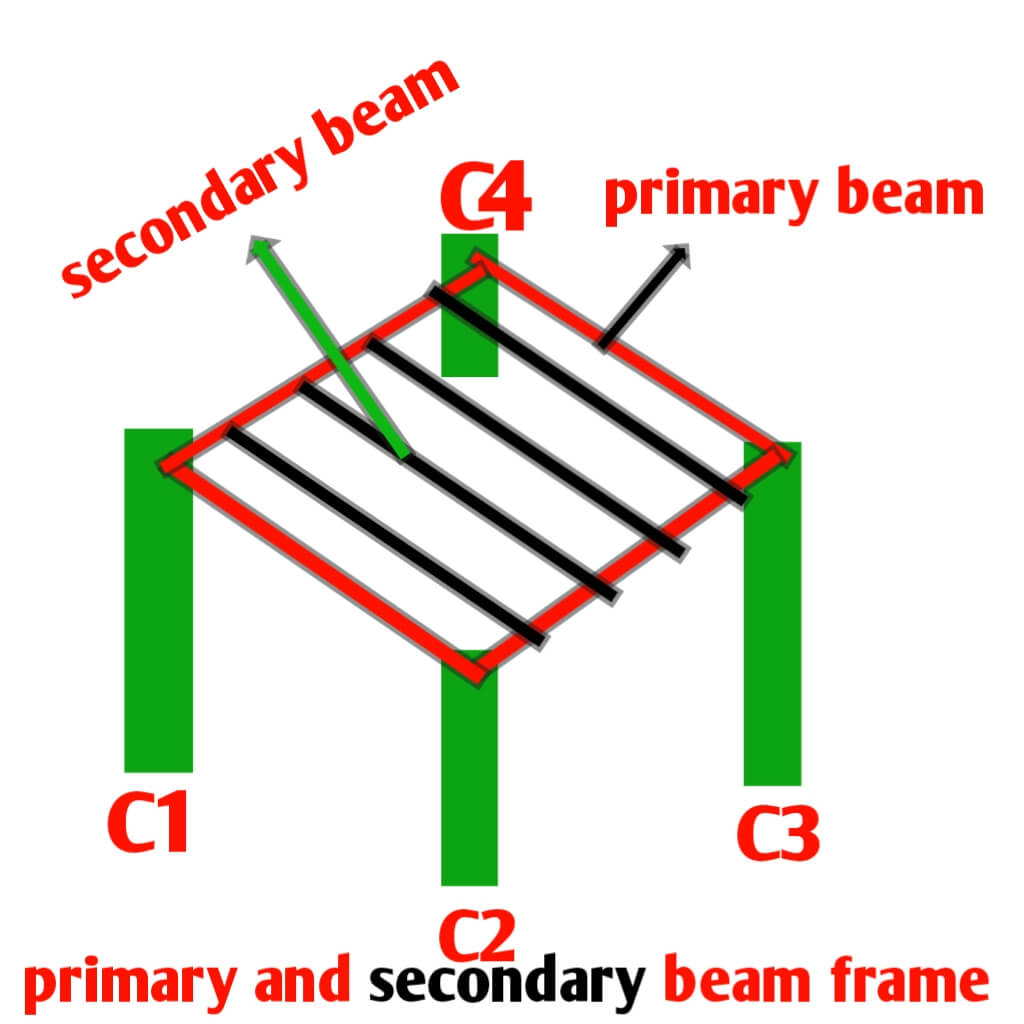
6) Secondary beam :-those type of horizontal flexural (beam) structure member which directly connected to primary beam that is main beam and not directly connected to column.this beam is known as secondary beam which Safely transfer the load to the primary beam acting on it by the slab.
Types of beam according to geometry and shape
Types of beam according to geometry and shape is categorised into 3 types of beam some beam provided straight ,some curve and some may be tampered in different part of building construction work.
1) Straight beam :- the beam of Steel and concrete having straight profile is known as straight beam
2) Curved beam :- the beam of Steel and concrete having curve profile is known as curved beam
3) Tampered beam :- The beam steel and concrete having tempered profile is known as tempered beam.
Types of beam according to using material
Types of beam according to using material it is categorised into three categories concrete beam, Steel beam and timber beam. For designing of beam structure we should use three type of material that is concrete, Steel and some using Timber also
1) Concrete beam :- this type of beam is made from concrete structure we know that RCC is is mix of concrete mortar and reinforcement. Reinforcement concrete is used to form several type of beam structure
2) Steel beam :- this type of beam structure is made from Steel only. You have seen in India there is some iron Bridge which was made of steel beam
3) Timber beam :- this type of beam structure is made from wood. In rural areas of North East India there is so many forest and various type of timber is used for furniture work and can be used for construction of their houses and their houses are made of using Timber.
Types of beam according to equilibrium condition
When axial load is applied over beam structure resulting development of bending stress which causes bending moment and there is neutral point in which summation of all the the forces acting on the beam is zero and summation of all the reaction forces acting upward direction is zero. Point of zero moment is known as equilibrium point. According to equilibrium condition types of beam is categorised into two categories
1) Statically determinate beam :- A beam is called determinant beam if it can be analysed by the basic equilibrium condition the support reaction can be found by using the basic equilibrium condition. In equilibrium condition the summation of all horizontal forces acting on it is zero and summation of all vertical forces acting in upward direction is zero.
2) Statically indeterminate beam :-
if the beam cannot be analysed by using basic equilibrium condition known as indeterminant beam.
Types of beam according to their cross section
Various types of cross section of mild steel is used as beam structure in construction of building, high rise building, dams ,bridges and etc. Sum of this beam structure is I- section ,H-section, C-section, L-section and T -section of beam

1) I- section :- that type of beam structure which have I type cross section is known as I-section of ms steel. Horizontal element of I section is known as flange and vertical element of I section is known as web. I section of beam usually made of structural steel and used in construction and civil engineering. bottom part of ई section have tension zone and upper part of flange and web in compression zone.

2) H-section beam :- H- section of beam look like I section of beam but H section of beam have width of flange and web is almost equal and H section of beam Steel can be used for load bearing column.
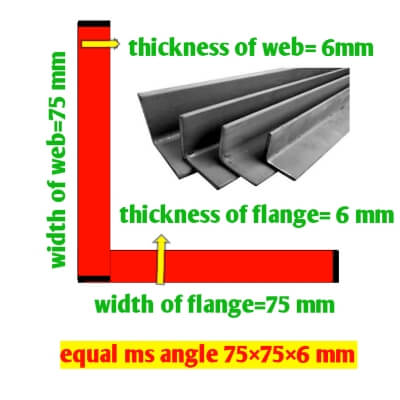
3) L section of beam :- L section of beam is known as angular beam having cross section L shaped in which vertical part is web and horizontal part is flange
4) T section of beam :- t section of beam used in construction and civil engineering and used as load bearing structure of reinforcement concrete
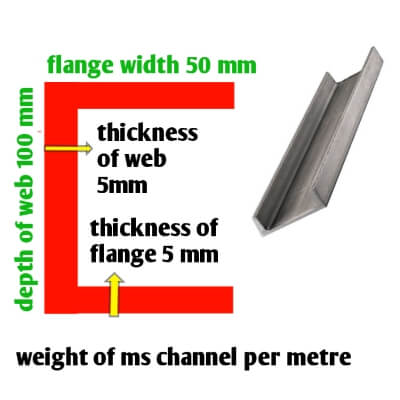
5) C section of beam :- C section of beam is also known as MS channel in which both flange are parallel. It is also load bearing structure and it have cross section look like C shaped.
Types of load on beam

There is four types of axial load acting on beam
1) point load
2) uniformly distributed load
3) triangular load
4) trapezoidal distribution load
If the vertical Axial load acting at single point of beam that is known as point load. And if the vertical axial load acting on beam along the span of its length and uniformly distributed that load is known as UDL. Some type of vertical axial load acting on beam in angular direction of inclined plane that’s form triangular load and trapezoidal load.
Sagging and hogging bending moment

1) Sagging:- If we have simply supported beam a structure member which is supported at both end by column when load is applied on beam it will experience positive bending moment and bend in concave face structure in downward direction like Cup shaped. in concave face there is three layer middle one is known as neutral axis, below middle layer there is a tension layer and upper of neutral layer is known as compression layer. For simply supported beam top fiber is compression zone and bottom fibre is tension zone.
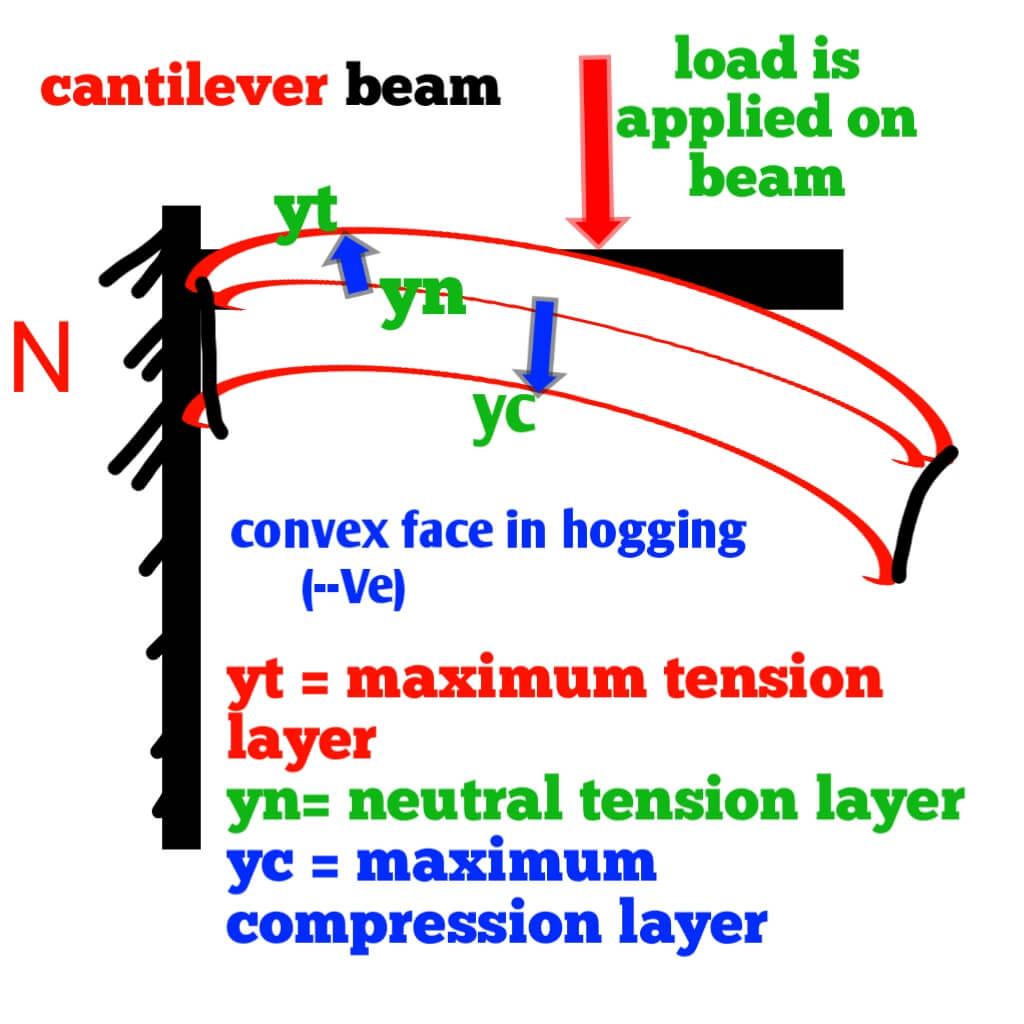
Hogging:- negative bending moment hogging is found in cantilever beam which supported only one end by supporting member that is column and second end is free .when load is applied on cantilever beam it will experience negative bending moment and bend in convex structure in upward direction. top of convex face is in maximum tension and bottom fiber in compression